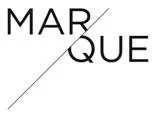Stopping the fake indigenous art flood – when does cultural appropriation become theft?
Head into any souvenir shop and chances are you'll be able to pick yourself up a nice piece of rip-off indigenous art. The 'Aboriginal Style' souvenir was probably mass-produced in China. Is this a problem? Australia's indigenous art community says yes.
Ahead of the 2018 Commonwealth Games on the Gold Coast, Australia's indigenous arts community is calling for the government to make it illegal to import and sell 'Aboriginal Style' arts and crafts products in Australia, unless those products have been made by, or licensed from, indigenous people.
We certainly support the protection and promotion of indigenous culture, however, is placing such strict restrictions on the marketing of indigenous art taking cultural protection into dangerous territory?
Under the current Australian Consumer Law, it is legal to sell fake souvenirs provided:
- you don't claim the product is authentic; and
- the product labelling identifies where it was made.
What about copyright law? Nope, that will only protect the copying of an artist's specific work, not a cultural style of art.
A law to protect indigenous style art will be the first of its kind, and we already foresee a couple of issues.
- To protect indigenous style art, it would have to be defined. Minefield.
- The legislation would have to expressly deny some members of Australian society the right to import and sell a class of products.
So, what can be done?
Well, only tequila that is produced in Mexico's "Tequila Territory" has the right to bear the famous Tequila name and, while we're talking beverages, don't you dare sell your Australian domestic sparkling as Champagne. These cherished beverages maintain their loved status in part due to the geographical indication (GI) protection they are afforded. So why not adopt a similar regime for Indigenous art?
If we went that way, should the protection only apply to art produced in Australia by people of Aboriginal or Torres Strait Islander descent? What if the art is authentic but the indigenous artist resides overseas? And how can you define an artistic "style", when art is supposed to be a constantly evolving and rule-free form of expression?
We're not saying that indigenous art should be afforded no legal protection from cheap knock-offs. We are saying that it's a much more complex issue than may first appear, and the first step should be to understand (from indigenous artists themselves) what we really want to protect.
We do not disclaim anything about this article. We're quite proud of it really.


